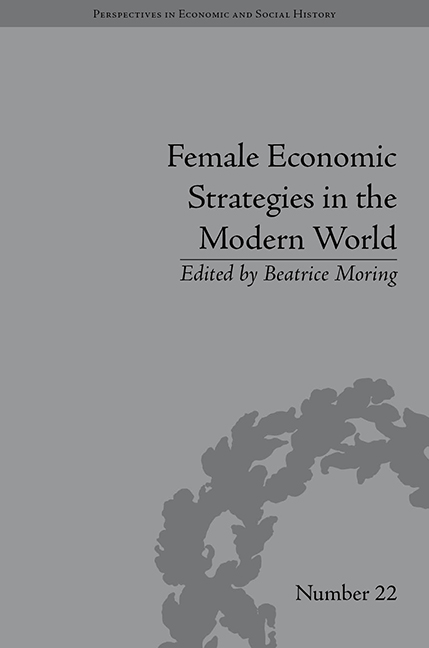Book contents
- Frontmatter
- Contents
- List of Contributors
- List of Tables
- Introduction
- 1 Widows, Family and Poor Relief in England from the Sixteenth to the Twentieth Century
- 2 Survival Strategies of Poor Women in Two Localities in Guipuzcoa (Northern Spain) in the Nineteenth and Twentieth Centuries
- 3 Women, Work and Survival Strategies in Urban Northern Europe before the First World War
- 4 Women, Households and Independence under the Old English Poor Laws
- 5 The Economic Strategies of Widows in Switzerland from the mid-Nineteenth to the mid-Twentieth Century
- 6 Mexico: Women and Poverty (1994–2004): Progresa-Oportunidades Conditional Cash Transfer Programme
- 7 Gender and Migration in the Pyrenees in the Nineteenth Century: Gender-Differentiated Patterns and Destinies
- 8 Women and Property in Eighteenth-Century Austria: Separate Property, Usufruct and Ownership in Different Family Configurations
- Notes
- Index
1 - Widows, Family and Poor Relief in England from the Sixteenth to the Twentieth Century
- Frontmatter
- Contents
- List of Contributors
- List of Tables
- Introduction
- 1 Widows, Family and Poor Relief in England from the Sixteenth to the Twentieth Century
- 2 Survival Strategies of Poor Women in Two Localities in Guipuzcoa (Northern Spain) in the Nineteenth and Twentieth Centuries
- 3 Women, Work and Survival Strategies in Urban Northern Europe before the First World War
- 4 Women, Households and Independence under the Old English Poor Laws
- 5 The Economic Strategies of Widows in Switzerland from the mid-Nineteenth to the mid-Twentieth Century
- 6 Mexico: Women and Poverty (1994–2004): Progresa-Oportunidades Conditional Cash Transfer Programme
- 7 Gender and Migration in the Pyrenees in the Nineteenth Century: Gender-Differentiated Patterns and Destinies
- 8 Women and Property in Eighteenth-Century Austria: Separate Property, Usufruct and Ownership in Different Family Configurations
- Notes
- Index
Summary
Introduction
In 1789 Mary Chilcott from Aff Piddle in the county of Dorset, a widow with four children, the eldest of whom was nineteen, was spending six shillings and six pence a week on bread and flour. This represented 89 per cent of all her expenditure on food and 69 per cent of all her expenditure. Apart from bread and flour the only other food purchases were 4 pence on bacon, 6 pence on tea, sugar, butter and cream and I penny on yeast.
Just over a century later in York, another household consisting of a widow aged sixty-three and a daughter aged twenty spent 22 per cent of their income on meat and 16 per cent on bread. For these two women we also know what they ate at every meal in the first week of March in 1901. For example, on Monday 5 March 1901, their breakfast consisted of bread, butter and coffee, dinner (taken in the middle of the day) of meat, potatoes, bread and tea and a tea (evening meal) of bread, butter and tea. Indeed, breakfast was always limited to bread and butter and either tea or coffee, except on Saturday. Nor did tea vary greatly, involving usually just bread, butter and tea. Dripping was added on Wednesday and Thursday and on Friday the bread was toasted.
- Type
- Chapter
- Information
- Female Economic Strategies in the Modern World , pp. 11 - 32Publisher: Pickering & ChattoFirst published in: 2014



